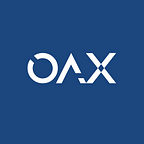A lot of the community has asked us to explain the difference between openANX and other decentralized exchanges out in the market, be it BitSquare, BitShare, Bancor, Raid-X, ShapeShift or others. As you can see from even this incomplete list, the move toward DEX’s is significant, and sustained. While I am no expert in all these platforms, I’ve gathered some info to do some initial comparative analysis, and from this, we can draw a few conclusions.
The first thing to understand is that in any transaction, the Asset Gateway will only hold a single set of keys, rather than both crypto and fiat keys. If a user wishes to move ETH to BTC, then the Gateway will hold BTC keys, if the user is changing crypto to cash, the Gateway will hold the cash. In both the above cases the asset held by the Gateway will be secured by the collateral they have posted to the blockchain(More on this later). At no time will any part of the platform or Gateway service provider hold both keys. This is the critical difference between decentralized and centralized exchanges.
The three key areas that differentiate openANX for other platforms can be summarized as follows;
1) Credit Risk markets
2) Asset Gateways
3) Liquidity Aggregation
I’ll spend some time talking through each of these.
First, I’ll talk about Credit Risk. If you consider the non-crypto financial markets, in most of the large banks and trading houses that run trading desks (who may take long or short positions on various stocks and commodities.) These organizations will have a credit desk, whose job it is to evaluate counterparty risk. The opposite party in every trade or transaction must be considered for its potential to default. By considering available information about the borrower or bond issuer, the credit desk can find an objective measure of the likelihood of default and the potential downside risk. They can only do that by evaluating the other parties assets, liabilities, and other factors.
This does not exist in the crypto-world. Until openANX. By asking Asset Gateways to post collateral onto the blockchain in ETH and issue fiat tokens for different currencies onto the blockchain rather than simply hold IOU’s, openANX creates an objective yardstick whereby users can compare exchanges by more than just price and volume. By having Gateway A vs. Gateway B USD tokens freely tradable, the reputation and effectiveness of gateways are being evaluated in real-time by the community.
In essence, this creates new credit markets and new liquidity for participants to trade in.
To understand the second unique difference of the openANX platform, it is necessary to understand the key complaint about current DEX. Many users talk about the speed and security of these platforms, but lament the lack of liquidity and trade volume. The reason for this is many traders and users like to be able to recognize market gains quickly, and in cash. In the DEX space, very, very few decentralized projects have decided to consider providing Asset Gateway services, and if they do, they provide a single exchange channel, with no competition on rates or fees. OpenANX is a real-world application of DEX technology because we recognize that users want the option to bring assets and cash on and off chain. To provide greater competition, and hence better service for participants, we will bring together existing centralized exchanges via a consortium and allow them to integrate into the openANX ecosystem. Each Asset Gateway will offer a collateralized deposit onto the blockchain, held in a smart contract. The amount of this collateral will be transparent and will allow users to more effectively evaluate the risk of interacting with a particular Gateway.
By working with existing exchange providers and decentralized platforms to integrate and by migrating the ANXPRO user base to the openANX platform, the openANX platforms enters the market with a ready-made user base. The platform will launch with sufficient users to overcome one of the major challenges facing existing DEX, that of having enough trade volume, or liquidity.
Many DEX projects contain exceptional technical developments, new specifications or functionality that the wider community greatly anticipates. Many of these projects are developed purely from the perspective on technical excellence, with little actual business understanding by the project team of how to run and exchange, how to build or maintain the network of relationships to be successful in the space. ANX International is the keystone backer of the openANX platform. ANX International runs one of Asia’s oldest exchanges. They are well known in the industry, with a large base of users and contacts in the community. They have a successful business providing blockchain services to companies worldwide, and have one of the largest and most experienced blockchain and DLT development teams in the world. In addition, openANX has a team of advisors who are well known in the industry, from blockchain companies, from the mining consortiums, and from the wider community, from the US, UK, China and elsewhere. By bringing this exceptional team of some of the industries brightest minds together, the openANX project has a wide network of contacts and partners to help drive adoption and growth. This allows for a large and robust network of committed users who will use the platform, exponentially increasing liquidity and hence trade volume.
Hopefully this post has answered some of the major questions of comparison and outlined openANX’s competitive advantage. For further information,
Bitcointalk ANN: https://bitcointalk.org/index.php?topic=1943946
Bounty ANN: https://bitcointalk.org/index.php?topic=1947373
Website (includes FAQ, white paper): https://www.openanx.org/
Twitter: https://twitter.com/OAX_Foundation
Medium: https://medium.com/@OAX_Foundation
Reddit: https://www.reddit.com/r/OpenANX/
WeChat code: http://i.imgur.com/1JnIk3q.png
